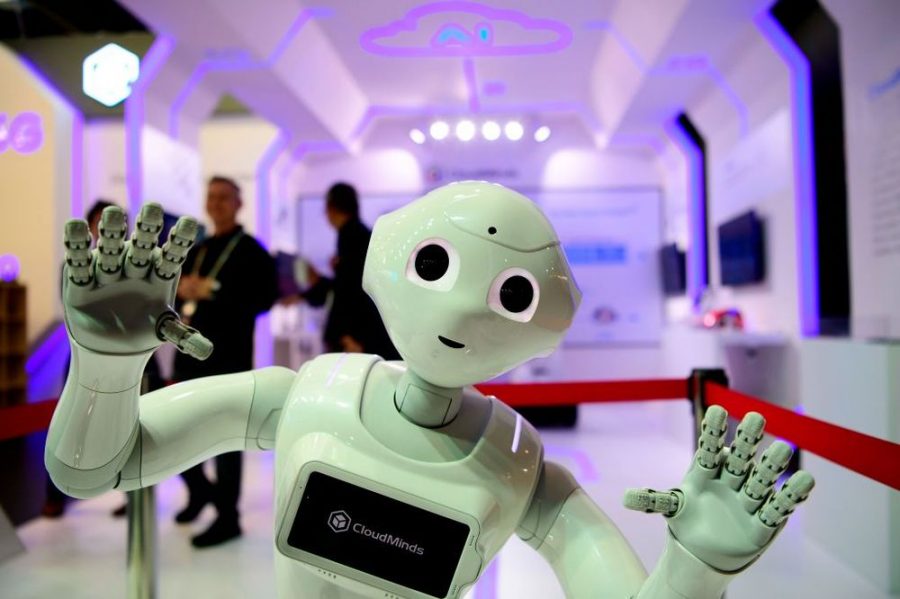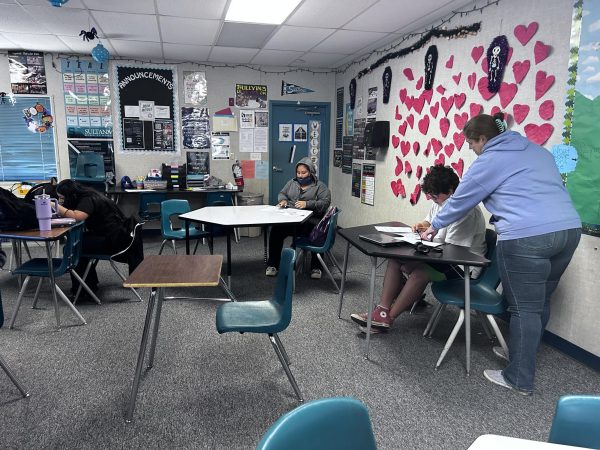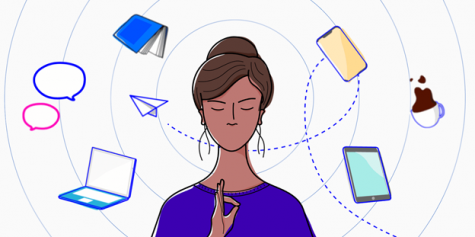Robots Combat COVID-19
April 28, 2020
In a world filled with innovation, the need for robots in the health industry has increased immensely due to battle COVID-19. This pandemic has swept nations and resulted in a life of social distancing, a rapid awareness of surroundings, and utilizing robots to alleviate the spread of the virus, including the effects of social isolation. Robots have been widely used in China, East and South Asia, Europe, and the U.S.
The virus originated in the city of Wuhan, China and has since spread all over the world. China responded with a lockdown to contain the virus. China implemented robots to reduce the amount of human contact.A Danish company, UVD Robots, sent robots to China which takes 10 minutes to clean a room. The CEO of UVD Robots, Per Juul Nielsen, stated to IEEE Spectrum that, “The initial volume is in the hundreds of robots; the first ones went to Wuhan where the situation is the most severe.” The robots use UV technology which emits a UV length of 254 nanometers that breaks down any virus, bacteria, and infectious diseases DNA-structure.
The robot is equipped with 360 degrees coverage that includes sensors and software to prevent any accidents. It also has an emergency button for troubleshooting and if the robot is in an umapped setting. It can disinfect 9-10 rooms before needing a charge which takes three hours. To use the robot, it has to be connected to wifi with a native app.
However, another robot was developed in China to conduct COVID-19 tests. This robot has the ability to do throat swabs. The robot has a mechanical arm that can precisely collect what is needed with an endoscope that provides a high-definition 3D anatomical scenes. There have been 80 collected samples with a 95 percent success rate as of February 8th. This robot was created by the Guangzhou Institute of Respiratory Health and the Shenyang Institute of Automation under the Chinese Academy of Sciences.
In Thailand hospitals, “Ninja robots” can examine a patient’s temperature while communicating with a doctor via video chat that is embedded in the robot. Ninja robot is a wheeled robot with a face similar to a cartoon, a screen attached to the body, and they received their name because of the black exterior. Viboon Sangveraphunsiri of Chulalongkorn University expressed to AFP from The New York Times that, “Other models are being designed to deliver food and medicine to patients, as well as disinfect hospitals,” these robots will be upgraded in the future.
In India, the company Asimov Robotics launched two robots that can alert citizens about the dangers of COVID-19 and the concept of social distancing. These robots distribute masks and hand sanitizers wherever they go. The design of the robot resembles a human, but in robot form with a screen inside of its chest. The CEO, Jayakrishnan T. told The Hindu, “A general public apathy towards preventive measures against COVID-19 prompted the solutions-provider company to go for such a drive.” COVID-19 has taken the lives of 17,830 individuals as of April 28, 2020 in Asia.
Many countries have been placed into a national lockdown with 125,915 overall deaths as of April 28, 2020. In Germany, while people are grocery shopping the establishment Edeka has a robot that informs the people of the importance of keeping a safe distance from each other. It is placed near cash registers where human contact is likely to occur. The robot is named Prepper. Prepper has a short body that contains wheels, moveable arms when speaking, with a white and gray exterior. The robot has huge eyes with a small mouth, including a pointy nose to appear friendly to customers.
In Britain, Starship uses a six-wheeled ground robot to deliver food in Emerson Valley. The robot goes from door to door to limit contact between people. The robot consists of a pole with a light attached to it, with a message that says, “I deliver your shopping, robotdelivery.co.uk,” people can download the app onto their devices.
Meanwhile, in the U.S, COVID-19 has taken the lives of 57,941 people, updated from April 28, 2020. Numerous states have announced stay at home orders with the ability to the only shop at essential stores. In Los Angeles, Postmates are using ground wheel robots that deliver food to its customers. This robot has glowed eyes with a yellow and black exterior that displays if it is on delivery via a screen, the robot is relatively on the smaller side.
Also, robots are being used to counter the effects of social isolation. The company Temi USA Inc, distributed robots to the Maplewood facilities to accommodate senior citizens’ need for socialization. The autonomous wheeled robot contains a computer screen face, it is about 3½ feet high and has a black or grey exterior.
According to Shane Herlet, chief of an operating officer of Maplewood Senior living based off of Westport, Connecticut, conveyed to The WallStreet Journal, “Using 3-D mapping, sensors and voice commands to interact with people, the robots connect the facility’s senior residents to relatives and doctors using a video-chat app, deliver packages and collect items from rooms. They can even tell jokes.”
While in Tokyo, Japan, robots were utilized for a graduation ceremony for students to attend by video conferencing. The robots were dressed in a cap and grown with screen faces of the students, they rolled onto a podium to receive the diplomas while the school staff congratulated them. A graduate of the Business Breakthrough University, Kazuki Tamura told the New York Post, “I think this is truly a novel experience to receive a certificate in a public area while I am in a private space.”
Since technology has advanced many are concerned about the security aspect of robots. Professor Guang-Zhong Yang at the Institute of Medical Robotics communicated a response to those concerns, “One of the grand challenges is concerned with legal and ethical issues, which include what you mentioned in your question. Respecting privacy, and also being sensitive about individual and citizens’ rights—these are very, very important. Because we must operate within this legal ethical boundary. We should not use technologies that will intrude in people’s lives,” many companies will have their own legal contracts.
Nonetheless, Heriot-Watt’s professor of computer science Oliver Lemon contemplates new ways robots can help for future outbreaks, a socially intelligent robot. Lemon stated to BBC News, “You can imagine in the future that when you walk into a hospital waiting room, instead of encountering a human you encounter a robot who’s able to help you. That kind of hands-free, touch-free speech interface is really going to be in more demand,” the robot may have the ability to recognize different roles such as doctor, nurse, parent, and career.
Throughout history, pandemics soared and were defeated. With the help of robots, the battle of COVID-19 can be won more quickly. No matter the type of robot, they all have their place to withstand this virus. Even though this pandemic has taken something from everyone it has not robbed the people of cerebrating creative ideas to create a life of less suffering. Robots are no longer a dream of the future, but a strategy for beating COVID-19 now.










